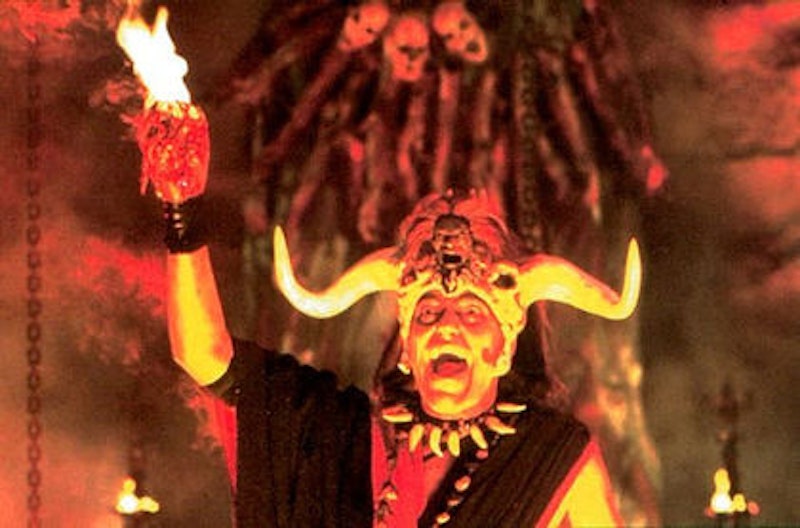If you’ve watched any of the first three Indiana Jones films recently and have a passing understanding of post-colonial theory, you’ve likely noticed that the films scream for an Orientalist critique. Archeology professor Indiana Jones is an enlightened, rational skeptic who warns his students constantly about the dangers of folklore and myth, or, as he puts it, hocus pocus and superstition. Non-Western peoples are shown as being pre-Enlightenment. Indy is in a position of cultural superiority, sometimes reaching the point of godlike or savior status: a protagonist to be emulated by people of other cultures. In some cases, the imperial ramifications of this presentation are explicit. At the end of Temple of Doom, banned from India for its “racist portrayal of Indians and overt imperialistic tendencies,” the British army comes to the rescue. As the title of the third film puts it, Indiana Jones is on nothing less than a crusade—one in which he puts everyone else in a museum dedicated to his own glory. As is sometimes hinted at in the films, he has grave robber tendencies.
The issue is not whether the films are Orientalist, but how we’re supposed to relate to them. For Shukrallah as for me, the issue of the Indy movies’ appeal relates to why Umberto Eco classified Raiders as a cult film. According to Eco, Casablanca is popular because it’s a pastiche of many films that came before it, and, in the viewer’s mind, the films that came after it as well. Watching the Indiana Jones movies, the same applies. The films are a jumble of highly-charged scenes, as Indy himself exemplifies familiar tropes in film history: he can be Bogey, he can be the fastest gun in the West, he can be Tintin all grown up. Spielberg and Lucas were inspired by images from the B-movies and pulp magazines of their youth. Viewing an Indiana Jones film allows you to turn off your filters. You can watch them again and again without having to worry about following a coherent narrative, enjoying the sensation of déja vu as one iconic image after another washes over you.
The use of such icons is what entrenches the Indiana Jones series into the censorship debate, but it’s also the source of their appeal. Before groups like the Russian Communist Party worry that Indiana Jones will burn anti-Soviet propaganda into the retinas of today’s youth, they should recognize why Cate Blanchett in a bowl cut butchering the Russian accent is entertaining in the first place.

